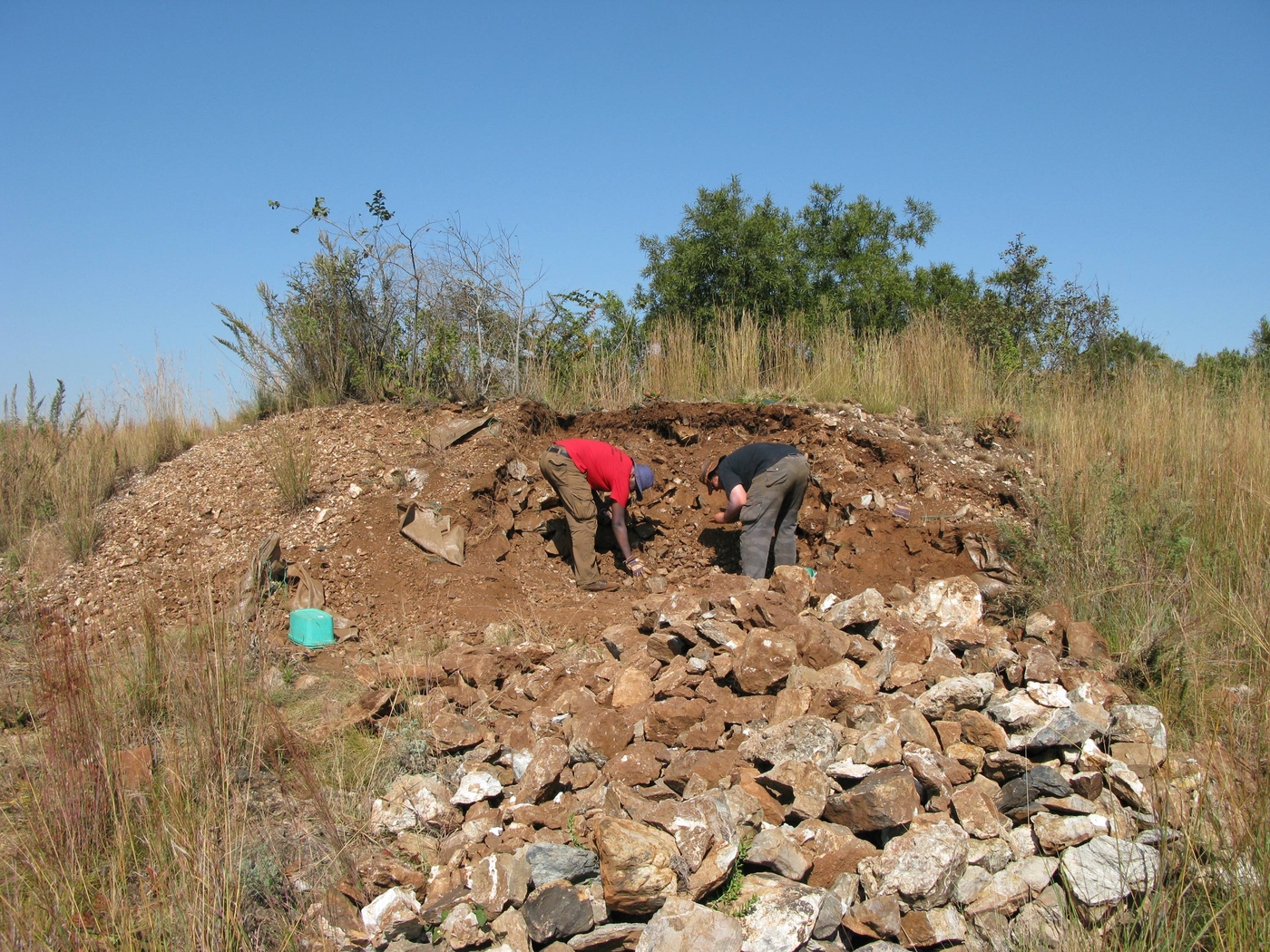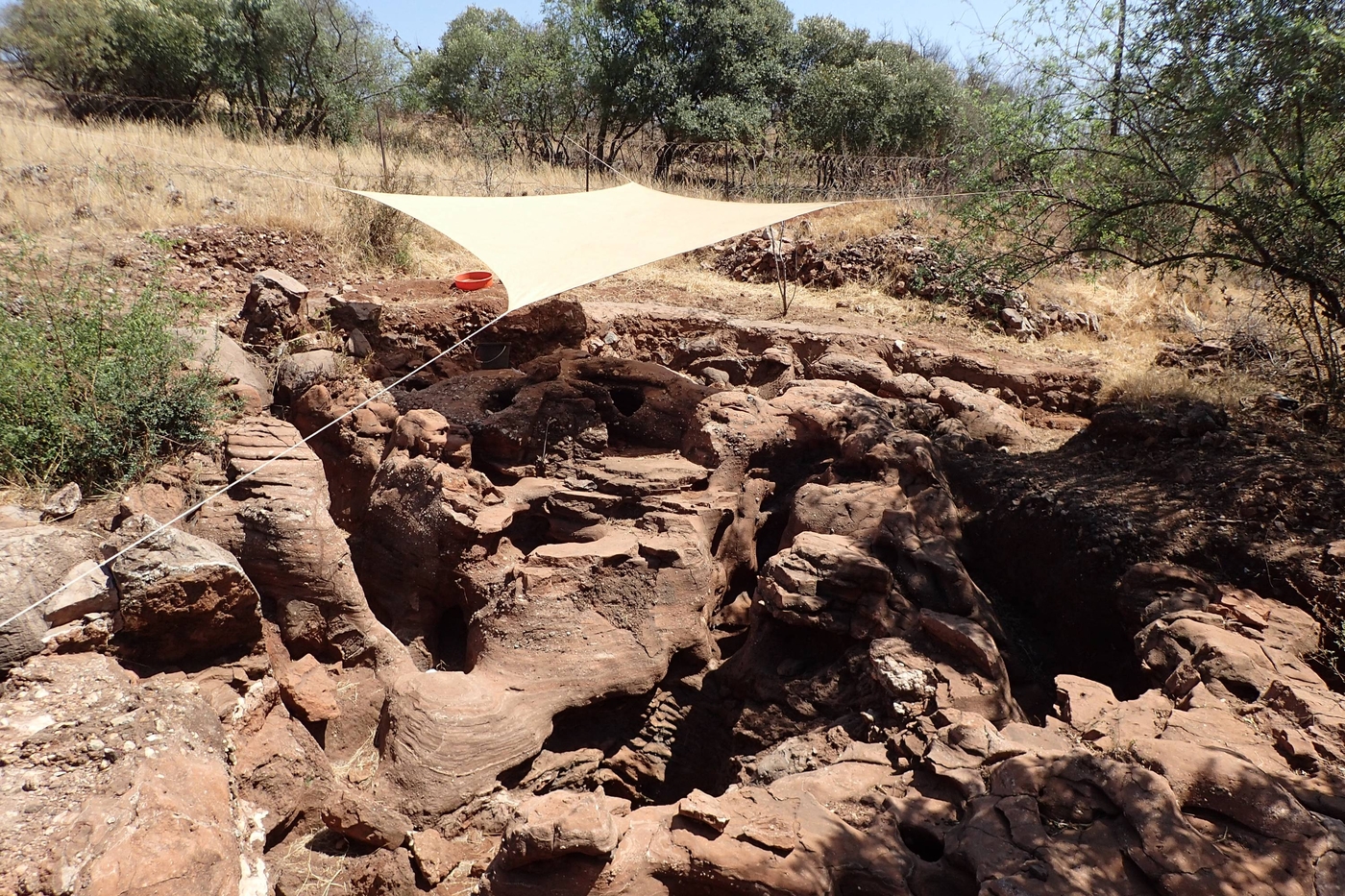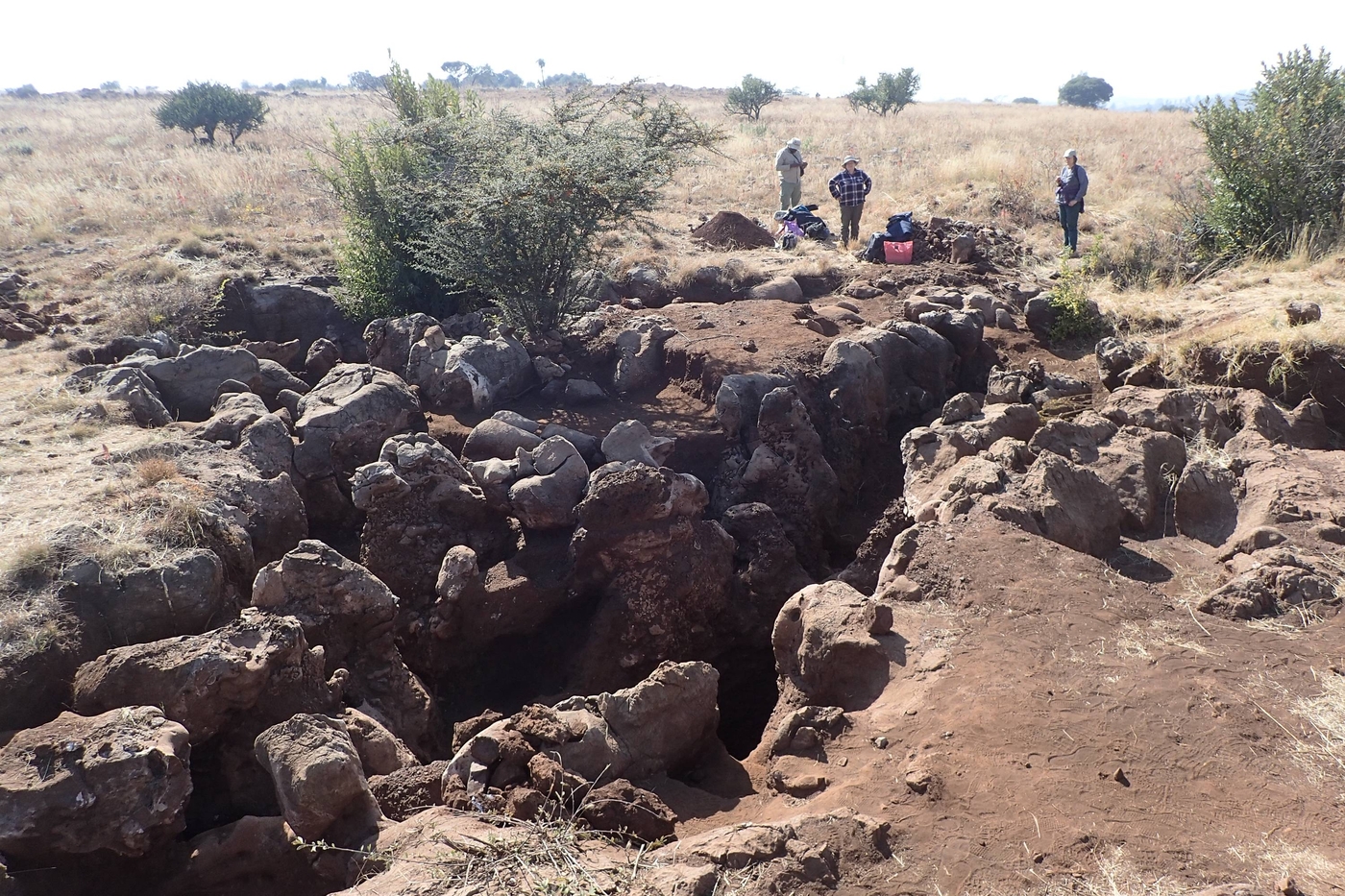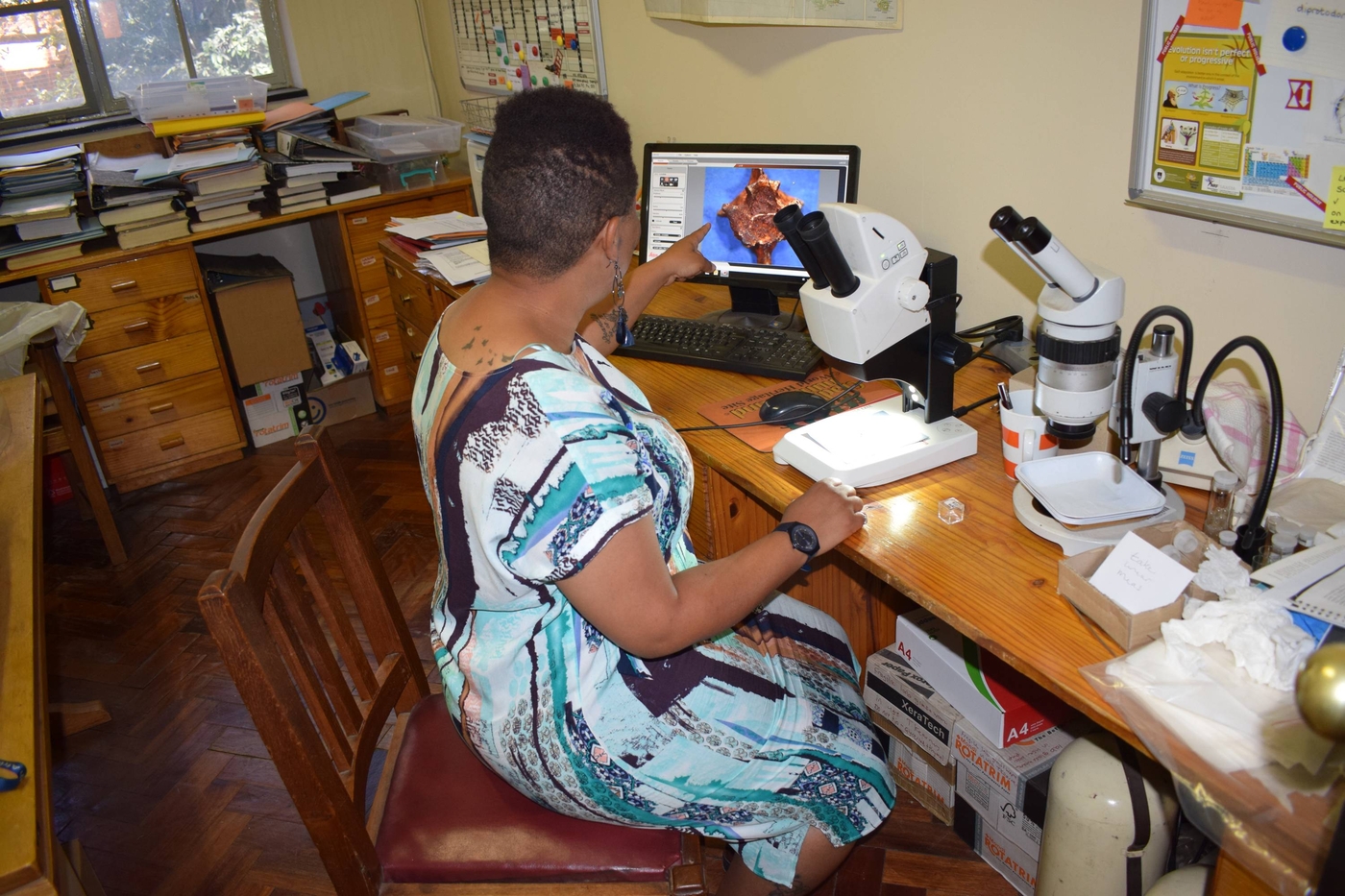Bolt’s Farm
Although South Africa is less well known than the East African Rift region for research into the origins of mankind, the first Australopithecus remains were discovered there as early as 1924. South African prehumans evolved and adapted to probably different environments.

Unlike other sites in the Cradle of Humankind, Bolt’s Farm is a vast eroded karstic network with fossiliferous sediments of different ages from 4.5 million years to 900,000 years. Although not unbroken, it is the longest chronological sequence in the region. A team of French and South African archaeologists have been carrying out excavations here since 2011.
A brief history
As on all sites in the Cradle of Humankind listed by UNESCO, miners came to Bolt’s Farm to mine for calcite in the first half of the 20thcentury. Robert Broom first began collecting fossils from the mines in 1936 before focusing on the sites of Sterkfontein and Swartkrans. In 1948, Charles Camp and Frank Peabody collected multiple samples during an African expedition mounted by the University of California and produced the first map detailing the location of certain sedimentary series. Bolt’s Farm fell into virtual oblivion until the end of Apartheid, and France and South Africa signed a scientific partnership agreement in 1995. From 1996 until 2006, surveys and sampling were carried out on an ad hoc basis, and more regularly between 2006 and 2010. The most promising sedimentary series were excavated from 2011.
Major fossils
Several fossils found by Robert Broom are holotypes - a single type specimen upon which the description and name of a new species is based. Urged by Robert Broom, the University of California returned several rare fossils discovered in 1948 at Bolt’s Farm to South Africa. They included several reference fossils, such as two primate skulls, one of which is akin to a sort of small baboon. The most celebrated fossil, however, belongs to a large feline, the Dinofelis barlowi, a "false" sabre-toothed lion (it has long upper canines, thicker than those of a "real" sabre-toothed lion but much less so than a present-day lion).
Current research
For decades, the fossiliferous sedimentary series at Bolt’s Farm were believed to be the same age. Since 1996, scientists have developed another theory. Since the first map was produced in 1948, new sedimentary series have been discovered, each with a different name. Although there are more than thirty of them, excavations have focused on five with the greatest scientific value. Between 4.5 million years and 900,000 years ago, the region’s climate changed several times, producing variations in the environment and the composition of its biodiversity of which the ancestors of humankind were part. The originality of the research carried out at Bolt’s Farm lies in the fauna studied, from the smallest to the largest animals, each providing different information.Since 2015, the team has been supported by the French Ministry for Europe and Foreign Affairs on the advice of the Excavations Board (Commission des fouilles).
Training and awareness
Since 2011, several young South African researchers and students have taken part in field schools at Bolt’s Farm. They have few opportunities to train in the field in their country. To encourage young people to consider a career in archaeology, and to help train students, two exhibitions were organised in 2010 and 2016. An upcoming exhibition covering an area of 300 m2will provide an insight into the various disciplines involved and reconstructions of animals and landscapes.
Project supported by the French Ministry for Europe and Foreign Affairs on the advice of the Excavation Committee (Commission des fouilles).
Useful links
-
LIA (Laboratoire International Associé) HOMEN (2011-2022) Hominidés et environnements : évolution de la biodiversité au Plio-Pléistocène dans le Cradle of humankind, Afrique du Sud.
-
In southern Africa, the Institut de recherche pour le développement (IRD), the Centre national de la recherche scientifique (CNRS) and the Centre de coopération internationale en recherche agronomique pour le développement (Cirad) have a shared office.











